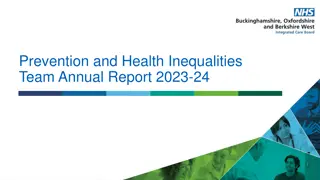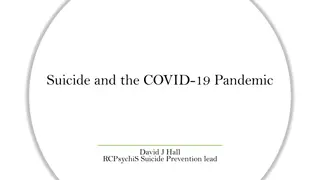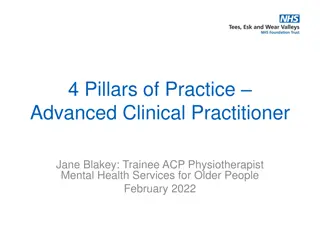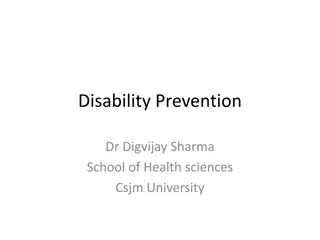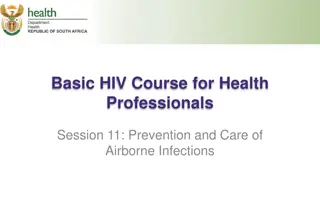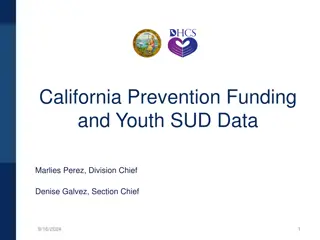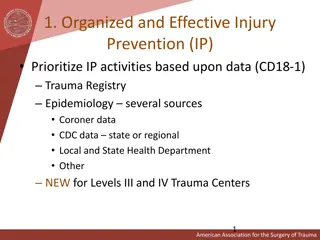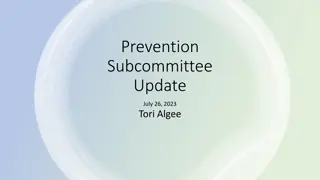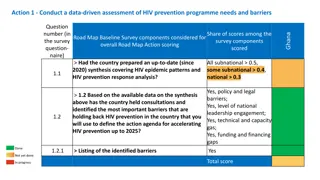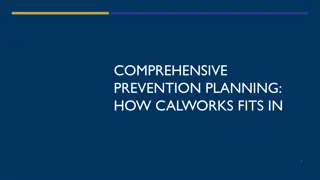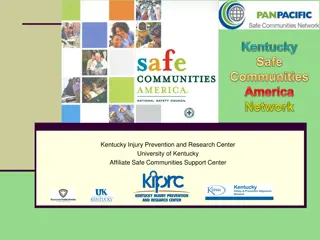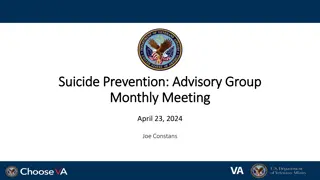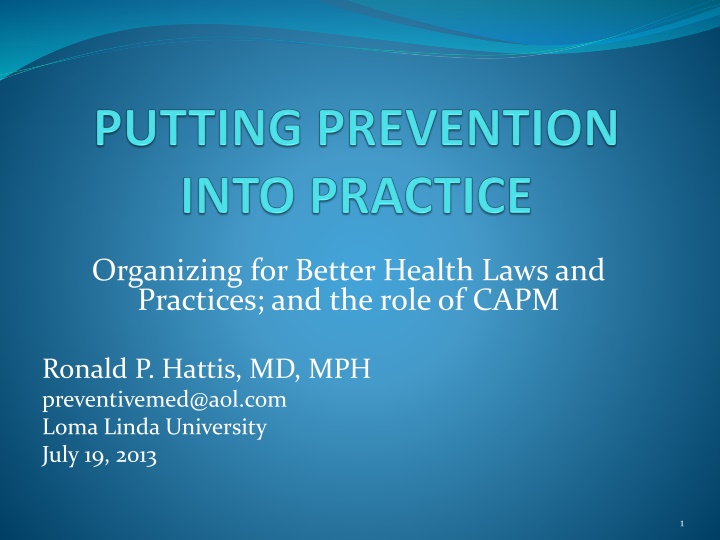
Influence of Medical Organizations on Health Policy
This presentation by Dr. Ronald P. Hattis discusses the importance of medical organizations in shaping health policy decisions. It covers learning objectives related to policy adoption, bill processes, and individual and group influence. The advantages of working through groups and a list of organizations available to Preventive Medicine physicians are also highlighted.
Download Presentation

Please find below an Image/Link to download the presentation.
The content on the website is provided AS IS for your information and personal use only. It may not be sold, licensed, or shared on other websites without obtaining consent from the author. If you encounter any issues during the download, it is possible that the publisher has removed the file from their server.
You are allowed to download the files provided on this website for personal or commercial use, subject to the condition that they are used lawfully. All files are the property of their respective owners.
The content on the website is provided AS IS for your information and personal use only. It may not be sold, licensed, or shared on other websites without obtaining consent from the author.
E N D
Presentation Transcript
Organizing for Better Health Laws and Practices; and the role of CAPM Ronald P. Hattis, MD, MPH preventivemed@aol.com Loma Linda University July 19, 2013 1
Learning objectives At conclusion of presentation, the resident will be able to: Describe the process of how specialty and other medical organization adopt policy decisions Participate in the process of a medical organization s policy deliberations Describe the basics of how a bill becomes law, and how physicians can influence the process Decide whether to accept an offer to join the state specialty society for Preventive Medicine 2
Ways to influence policy as an individual Send e-mails and letters Make calls Establish personal networks Do presentations Testify as an individual Write a personal blog Others? 3
Advantages of working through groups Organizations but not individuals can sponsor bills (and be listed as supporters) in state legislature Testimony on behalf of organizations carries more weight Organizations may have staff or lobbyists to work on the issues (esp. AMA, CMA) Multiple people can be motivated to support the effort May establish practice guidelines, standards 4
Organizations available to Preventive Medicine Physicians Organized medicine (general) National: American Medical Association (AMA), American Osteopathic Association (AOA) State: California Medical Association (CMA), Osteopathic Physicians & Surgeons of California (OPSC) Local: County medical societies (work as local agents of CMA) Specialty-specific for Preventive Medicine National: American College of Preventive Medicine (ACPM) State: California Academy of Preventive Medicine (CAPM) 5
Organizations available contd. Allied specialty societies American College of Occupational and Environmental Medicine (ACOEM) Regional: Western Occupational and Environmental Medical Association (WOEMA, 5 states)* American College of Lifestyle Medicine** American Society of Addiction Medicine** Disease-specific (not limited to physicians) Examples: Beyond AIDS; ACCP; AHA) Public health (physicians only small component) American Public Health Association and affiliates *Recognized by CMA **Not recognized by CMA; boards not part of ABMS or AOA 6
How to influence the policy of an organization Persuade officers or board members to support Become elected to a board or become a delegate Submit resolutions that set policy on a specific issue AMA, AOA, CMA, ACOEM: Annual house of delegates Any member may be author; usually requires a delegate or delegation (or specialty society) to introduce ACPM: Submit to Policy Committee CAPM: Submit to Board of Directors 7
How smaller groups influence larger ones County medical societies select delegates to state medical association State specialty societies have representatives at state medical association CAPM is represented in CMA House of Delegates and supports/sponsors resolutions ACPM is represented in AMA House of Delegates and does same 8
Kinds of prevention, public health positions that can be influenced Health care reform Health care funding and reimbursement Nutrition, smoking, other lifestyle issues Injury prevention Environmental health Support from medical community for public health infrastructure, funding, programs HIV/AIDS: reporting, partner services, screening Immunization 9
Main activities of California Academy of Preventive Medicine Supporting, proposing amendments to, and occasionally sponsoring bills in California legislature Letters Testimony at legislative committees Lobbying at legislators offices Representing PM at California Medical Association Specialty Delegation and inter-specialty meetings: network and influence other specialties Testimony at reference committees on resolutions House of Delegates: Resolutions Council on Legislation 10
How a bill becomes law (similar in most states as well as Congress) Introduced in one house Committee hearings, usually 2 or more If fails to pass out of any committee, bill is dead Amendments usually aim to reduce opposition Floor vote; if passes, on to second house Same process in other house If amended in second house, back to first house for approval (conf. comm. if needed) Governor must sign; if vetoed, requires 2/3 of both houses to override 11
2013 Legislative efforts of CAPM 14 bills reviewed by Board of Directors 8 supported, 6 neutral ( watch position) Supported bills: AB 1176, support residency programs (esp. primary care): failed SB 648, restrictions on electronic cigarettes as with regular cigarettes: alive in Assembly AB 609, make state-funded research available on Web: stalled in Senate, might revive 2014 SB 430, test binocular vision in school children: bill changed, CAPM no longer supporting 12
2013 Legislation supported by CAPM, contd. AB 332, require condoms for adult film industry: failed AB 336, disallow use of condom possession as evidence in prostitution prosecutions: stalled in Senate, might revive 2014 AB 446, require offering of HIV test in primary care clinics, reduce situations requiring written consent: alive in Senate AB 999, permit condoms in prisons: alive in Senate 13
Case study, bill sponsored by CAPM: California Senate Bill 380 (2011) Permits Medical Board of California to establish content standards to be included in CME presentations for selected chronic diseases, on nutrition and lifestyle for prevention and treatment Requires the Medical Board to periodically disseminate information to physicians on nutrition and lifestyle for prevention and treatment of chronic diseases Requires Board to convene a Working Group on this subject 14
California Senate Bill 380 follow- up (2013) 7/17/13: Working Group finally convened, 2 years after bill passed Drs. Wayne Dysinger and Ron Hattis included CAPM supplied most of additional members Testified before the Education and Wellness Committee of Medical Board Many barriers remain to full implementation 15
Resolutions acted on by CMA with support of CAPM, 2012 Supported 14 resolutions, opposed 3 relating to prevention and public health Resolutions successfully opposed: Would have repudiated CMA s position to decriminalize and regulate cannabis Would have imposed an impractical tax on obesity Would have reopened and restudied the issue of water fluoridation 16
Resolutions acted on by CMA with support of CAPM, 2012, contd. Resolution sponsored: Inform all California physicians of new HIV treatment guidelines to offer anti-retroviral medication to all infected persons Encourage linkage of all reported HIV cases to partner services Resolutions successfully supported: Urge AMA to support rescheduling by DEA of cannabis, decriminalization, & regulation Support collection of unused medications 17
Resolutions acted on by CMA with support of CAPM, 2012, contd. Change school TB screening from universal to risk-based Oppose lifetime blood band deferral of MSMs Support programs and referrals for bullying Support climate change programs Encourage water recycling Support regulation of nanotechnology Support sustainable communities strategies 18
Resolutions acted on by CMA with support of CAPM, 2012, contd. Endorse revision of furniture flammability standards Recognize health risks of prolonged sitting and encourage alternatives at work Support measures to assist the transition from Healthy Families to Medi-Cal Allow health care personnel other than physician to inform patients of positive MRSA results 19
Roles for residents in CAPM One resident is appointed as ex-officio member of Board of Directors Residents have testified on resolutions at CMA reference committees Any CMA member may speak; open to resident members of CMA Potential projects for residents May be by group at a specific residency program 20
Potential projects of interest for Preventive Medicine residents Employment opportunities Job listings Encouraging potential employers to consider PM graduates Informing medical students about the specialty Liaisons with medical schools Networking with potential mentors for research and employment 21
Potential projects of interest for residents, contd. Promoting clinical roles and privileges for PM specialists Assuring role of PM in health care reform Translating areas of personal interest into policy Working for specific legislation Writing resolutions on a specific prevention issue Upgrading Web site 22
Joining CAPM Resident membership only $10/year Drs. Mike Orlich and Ron Hattis (both CAPM Board members) will personally absorb that charge for this year Application forms will be distributed 23
Questions? ?? 24

